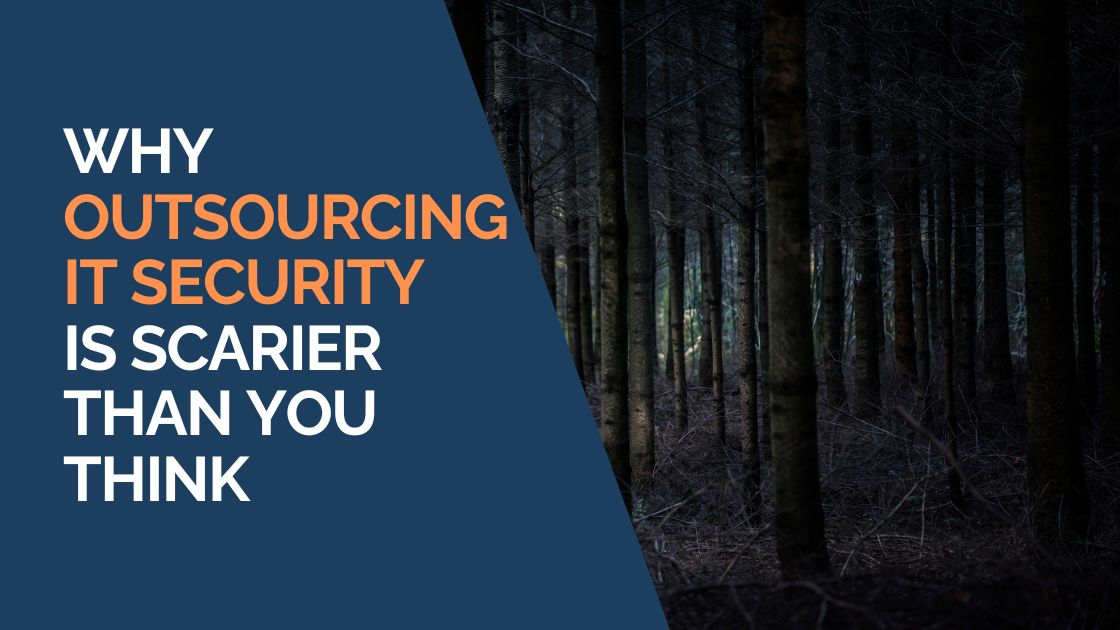When most people think of cybersecurity threats, they picture hackers, phishing scams, or stolen passwords. But for many growing businesses, the real danger comes from outsourcing IT security to a company that doesn’t coordinate with their managed IT provider.
When your IT and cybersecurity vendors don’t communicate, blind spots appear fast. Patches go undone, alerts get missed, and critical data ends up unprotected.
This October during Cybersecurity Awareness Month it’s the perfect time to ask:
Who’s actually responsible for keeping your business secure?
When Security Is Outsourced Twice
Many businesses assume they’re safer by hiring a separate cybersecurity firm on top of their managed IT provider.
On paper, it sounds responsible: two teams, two specialties. But in practice, it often means two sets of tools, two ticketing systems, and zero shared accountability.
Here’s what usually happens:
- Your MSP manages devices, updates, and users.
- The “cyber company” monitors logs or compliance reports.
- Neither fully owns the outcome or the recovery plan when something goes wrong.
That’s the real nightmare: when an incident hits, both providers point fingers, and you’re stuck in the middle waiting for a fix.
Why Outsourcing IT Security Separately Doesn’t Work
Cybersecurity isn’t a separate department anymore. It’s built into how your network, email, and users function every day.
When security is handled by one vendor and IT by another, three problems appear almost immediately:
- No Shared Context The security team doesn’t always know your network setup, policies, or employee workflows. They monitor from afar, not from inside your systems, and that distance slows their response.
- Tool Overlap and Conflicts Two vendors mean two stacks of software. Endpoint tools collide, licenses overlap, and agents compete for resources. Performance drops, tickets spike, and nobody takes ownership.
- Gaps in Accountability When there’s a breach or compliance issue, each vendor insists the other was responsible. In the meantime, your staff are offline and your leadership team is frustrated.
In short, outsourcing IT security twice multiplies your risk instead of reducing it.
The Smarter Approach: Integrated IT Security
When your IT and security are handled by a single, competent managed service provider (MSP), you get faster fixes and a unified defense strategy.
An integrated MSP builds cybersecurity into every process:
- Workstations are hardened and monitored from the same platform.
- Backups, patching, and MFA policies are consistent across your environment.
- Alerts route to one service desk that knows your business and your systems.
This level of integration is all about removing friction between operations and protection so your business stays productive and secure.
What It Looks Like When It Works
The difference is night and day:
| Outsourcing IT Security with Separate Vendors | With an Integrated MSP |
|---|---|
| Conflicting agents and alerts | One cohesive platform |
| Reactive handoffs and delays | Immediate action by one team |
| Gaps in ownership | Clear accountability and results |
| Complex billing and duplicated costs | Simpler, predictable service model |
That’s why the most successful businesses don’t treat cybersecurity as a separate project. They expect it to be built in, not bolted on.
How to Tell If Your Security Is Fragmented
Ask yourself a few simple questions:
- Do your IT and cybersecurity vendors share a single dashboard or ticketing system?
- Who’s responsible for patch management, MFA enforcement, and endpoint monitoring?
- If there were a ransomware incident tonight, who leads the response and who handles recovery?
If those answers aren’t crystal clear, your cybersecurity may already have gaps, even if you’re “covered” on paper.
What Business Leaders Should Do This Month
October is full of warnings about phishing and password hygiene, but most business leaders already know those basics. The real message this month should be about alignment.
Make sure your IT operations and security strategy are connected. Ask your MSP how security is integrated into their service model. If they can’t answer without naming a third-party partner, it might be time to find one who can.
The Bottom Line
Outsourcing IT security to a separate company might seem safer, but it usually creates the very risks you’re trying to avoid. The smarter move is to work with a managed IT provider that treats cybersecurity as part of the foundation, not an optional add-on.
Because the scariest thing in cybersecurity isn’t a hacker in the dark.
It’s two IT companies who don’t talk to each other.
Next Steps
At Stringfellow Technology Group, we integrate cybersecurity into every part of our ProSafeIT service, giving growing businesses peace of mind and a single point of accountability.
Talk to us about ProSafeIT and see how integrated IT and security can help your business grow without fear.




